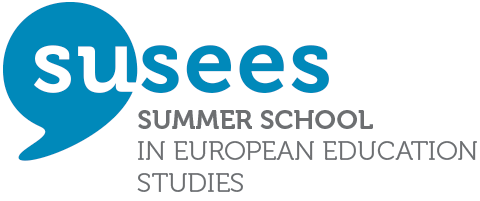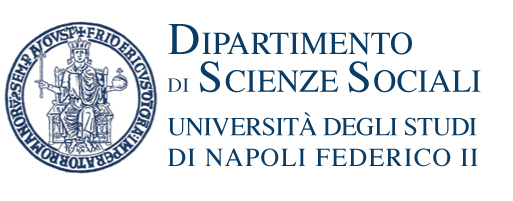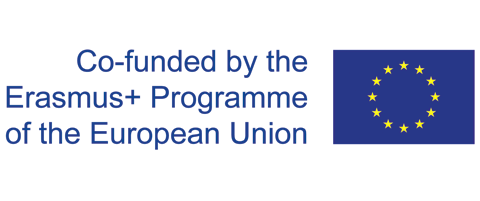Paolo Landri (IRPPS – National Research Council, Italy)
Download Landri attach
Senior Researcher, CNR-IRPPS (National Research Council - Institute of Research on Population and Social Policies). My research interests concern organizations, professional learning and school policies. I have recently edited with Assunta Viteritti a special issue on Scuola Democratica on Sociomateriality in Education (2016) and several years ago with Tara Fenwick a special issue on Pedagogy, Culture & Society presented with the title: 'Materialities, Texture, and Pedagogies: Sociomaterial Assemblages in Education' that has been published by Routledge as a book. I have taught Metodology of Qualitative Research at the University of Napoli 'Federico II' and 'Sociology of Organizations'.
The lecture will draw attention on the sociomateriality of the new spaces of education policy emerging at global and local level.
These spatial configurations remain unexplored in the linear dominant views of policy since: (a) the focus is mostly on decision-makers, and in particular, their strategic control on design, implementation, and evaluation of policy-making (b) the social relationships are defined in terms of human-to-human associations, and materialities (objects, technologies and artefacts) have a limited room in shaping education policies and (c) there are clear-cut boundaries and simple negotiations among producers/users of knowledge/policy-makers.
To enrich our description of education policy, and to expand our sociological imagination, the lecture suggests to take on the vocabularies of sociomaterial approaches to education. Coming from the field of science and technology studies, sociomaterial approaches is an umbrella term to include a range of theoretical orientations and empirical sensibilities: ANT, post-ANT, post-structuralism, feminist studies, complexity theory, etc. sharing broadly speaking the epistemological and philosofical position of the relational ontology.
Relational ontology invites to problematize the traditional sociological vocabulary – shaped on one hand by the dispositifs of persons and things, and by the regional geography of the social, on the other hand – to look at co-implication of human and nonhumans in the fabric of the social, and at the complexity the topology of the social.
To illustrate the worldliness of the sociomateriality of education, I will introduce and discuss a case-study I was involved in on the creation, development, and consolidation of new education policy space in a province of South Italy.
The case-study will illustrate the materialization of the education policy and the development of a local sociology of education. Also it will highlight the complex configurations among academic, professional, and political worlds, and how the materialization of new educational spaces implies the creation, extension, and consolidation of sometimes fragile novel actor-networks.
The lecture will not present first theory, the empirical ground, the discussion of the findings as it is required in the standard format of the academic writing. I will try to follow as far as possible, and by considering the constraints I am in (my competence, and my devices, i.e. the sociomateriality I am part of), a narrative account.
The narrative consists of 3 acts, 3 digressions, and finally by a concluding theoretical summary. Let’s start the story ‘in the middle of things’ !
Act One: In the middle of the things
At the end of ‘90s, the reform of state in Italy redesigns the education policy space: a) by promoting policies of deconcentration (within the state) through the development of autonomous schools and the shift of responsibilities to some peripheral offices of the Ministry; and b) by trying the implementation of policies of decentralization (from the state to local authorities) where Regione, Provincia and Comune had increasing and complementary roles in the field of education policy-making
In particular, ‘Provincia’ is asked to coordinate educational provision of Comune (the Municipalities – responsible for compulsory schooling), and to design the ‘right’ mix of upper secondary schools with respect to educational needs. National regulations envisage that Provincia may devise education participatory policy spaces, called literally ‘functional zones for the improvement of the educational provision’ (Legislative Decree 112/98 and 267/2000), to carry out these responsibilities.
At that time, I have been involved into a long research programme that lasted from 2004 to 2009 to describe and support the making, the establishment and the consolidation of the Conferences of Zones in the Provincia of Napoli. The research programme included: a) a research project on school buildings and facilities in support of the elaboration of a new plan for the use of school buildings (with the Department of Sociology and the Second University of Napoli) b) a research project on the enactment of the functional zones for the improvement of the educational provision (with Department of Sociology), and c) a project on early school leaving (called SPES_GOAL) that envisaged the collaboration of Department of Sociology, IRPPS-CNR, ISFOL, University of Napoli ‘Suor Orsola Benincasa’, USR –Campania (The Peripheral Office of the Ministry of Education, University and Research).
As a scholar, I have contributed to the circulation of Actor Network Theory, and more broadly to sociomaterial approaches to education in Italy (Landri, 2000; Lippi e Gherardi, 2000) and abroad (Fenwick & Landri 2012). This long research programme was then a further opportunity to understand to what extent these theoretical vocabularies could make a contribution to the investigation of education policy and to the expansion of the sociological imagination. By drawing on ANT and sociomaterial approaches, I started analysing the data collected in the research field to give answers to my research questions that were: a) How does an education policy making space materialises in practice? b) Is there a single, or are there multiple instantiations of education policy making space?
Act Two, First Answer: Education Policy Making Space as Assemblage of Humans and Nonhumans
Education zone emerges when a collective of agencies was put together, and in particular, an association of intermediaries and mediators was interconnected
The enactment of the education zone thus implied a complex assemblage of humans and nonhumans, particularly made by: a) the group of the Provincia of Napoli; b) a fragile bridge of texts resulting in deliberations; c) a map, d) an informative system; e) the enrolment of research groups, and f) the setting-up and activation of the conferences of the education zones.
Step-by-step, a machine for the deliberation of educational planning emerged and new spaces of education policy materialised.
- a) A group of civil servants in Provincia di Napoli
Until the end of the first decade of 2000 the ‘Provincia of Napoli’ made wide investments in school buildings, partly to recover from a critic situation where the increasing rate of enrollment in upper secondary school had created a gap between the provision of and the need for education space.
The new responsibilities of local authorities in the new governance of education system meant a further extension of its area of interest, i.e. from being a bureaucratic and technical provider of school space to assuming more responsibilities in educational policy-making. How should this passage be realized? How should the complexity of a notable number and distance of school units (almost 200 schools and 100 municipalities spread along the territory of the Provincia) be handled?
To face these issues, the Provincia of Napoli started to transform a complex situation by trying to shift from the chaotic, and erratic agencies of many mediators (teachers, headteachers, students, etc.), to the apparently more manageable complication of intermediaries of these agencies.
Excursus
Sociomaterial approaches invite us, in other words, to consider ‘the material presences that exert forces and are entwined with what appears to be human intention, engagement, resistance and change’ (Fenwick, 2011, p. 116). In particular, they focus on how agency is empirically distributed across people, technology and things.
It is useful to distinguish between mediators and intermediaries (Latour, 2005). An intermediary ‘transports meaning or force without transformation… even if it internally made of many parts (Latour, 2005, p. 39). On the other hand, ‘Mediators transform, translate, distort, and modify the meaning or the elements they are supposed to carry’ (Latour, 2005, p.39).
- b) A ‘fragile bridge’ of texts
The fragile bridge of texts comprised: the deliberation n. 415 (23 May 2002) where an association was elaborated between the Provincia of Napoli and the Regional Educational Office (the peripheral office of the Ministry); the deliberation of the local government of Provincia n.146 (28 May 2003) where aligned the upcoming zones for the improvement of educational provision with the territorial zones included in the economic planning of the Provincia of Napoli, and which were elaborated in the PCTP (an acronym for economic plan of the Provincia); the deliberation n. 386 (13 May 2003) containing the agreement for developing educational governance in the Provincia; a deliberation that built on these associations and set up the conferences of the zone, that is the spokespersons of the zones and the loci for provincial educational policy making (deliberation of the provincial council n. 154, 31st October 2003).
- c) A Map of the Zones is drawn
A Map of Zones of the educational policy-making of Provincia di Napoli is drawn.
- d) Informative Systems
The informative systems were databases collecting data on schooling and on VET in the Provincia of Napoli emerging from a collaboration with an in-house public company (ASUB).
- e) A Network of Research
Three projects of collaboration with the Faculty of Sociology, Faculty of Economy, and the Faculty of Architecture of the University of Napoli “Federico II” were launched. The intention was to develop a space of research for groups of sociologists, economists and architects to support the development of a devolved and participatory educational policy-making, by furnishing solutions, imagining alternative scenarios, and legitimating the work of the Provincia of Napoli.
- f) Conferences of Zones as ‘Little Parliaments’
Each zone has a Conference of Zone which is comprised of representatives of all of the schools (educational leaders) and the municipalities (mayors) in the zone, Representatives of the Regional Educational Office of the Ministry, the Entrepreneurs’ Union and the Centre for Employment are also members of the conference. In order to coordinate the decisions made within the local conferences, an additional ‘Conference of Conferences’ was created. It includes representatives elected from each ‘local conference’.
Act Three, Second Response: Multiple Enactments of the Space of Educational Policy-Making
The enactment of a space of policy-making does not follow completely the intentionality of the policy-makers. Collectives of agencies perform differently than expected and concur to the fabrication of patterns of relationship not envisaged before. Spaces can assume then multiple configurations: regions, networks, or fluids.
Excursus
Space is not given, and is not necessarily forced into three dimension patterns. It helps to consider educational spaces (what is next, far, beyond, etc.) as relational formations which are not exclusively defined in terms of metric distance, but with regard to a multiplicity of attributes (identity, familiarity, etc.).
An interesting typology, drawing on Mol and Law’s work (Mol & Law, 1994), and then reconsidered by Sorensen (Sørensen, 2009) includes: regions (containing well-delimited entities); networks (connected elements); and fluids (relationships that change, but maintain a recognised identity).
The typology invites us to develop topological accounts of sociological practices, and to acknowledge how the materialisation of the space may have different instantiations. It recognises the multiplicity of spatialities in social fabric, and that some dominant instantiations are accompanied, and to some extent also challenged, by different performances of the social space.
- a) The failure of education zones as machines for deliberation
(end of 2003 – half 2004)
Quite paradoxically from a linear perspective of policy analysis, the conferences of zones reveal to be a failure as machines for deliberation. Only a very small number of decisions are taken there, and most choices regarding educational planning are made elsewhere. Instead of being machines for deliberation, they appeared to be hearings which were to be listened to, and where proposals could be made. They are no substitute for the usual avenues of choice (one-to-one relationships with a school, municipality, provincial offices and the Councillor) that are to some extent hidden from public accountability, and a collective discussion and deliberation.
- b) Zones as Fluid Spaces, or Networked Spaces (from 2005 to 2008)
The zone and the conferences of zones may also be seen as occasions for raising awareness of the reproduction of local circuits of schools responsible for tracking schools, and a higher percentage of school drop-outs, for developing collaborative forms of professional knowing aimed at creating local spaces of affinity among head teachers and groups of teachers, for producing projects, etc. and for intervening in and possibly reducing the persisting reasons for inequality.
In these cases, the zone is enacted less as a hierarchical site, and more as a fluid space in which school boundaries are open to reflection. The definition of the ‘zone’ becomes problematic, and the articulation of the conference of zone is again under construction. Here, the possibility emerges of developing a space for challenging school practices and rebuilding patterns of relationships with regard to knowledge-making. In the latter case, the zone becomes a place for exchanging knowledge and generating new perspectives on school governance.
In Zone 1, for example, a group of headteachers met regularly in 2005 and 2006 to elaborate on common strategies in educational guidance, and deal with the issue of student registration with the aim of potentially developing joint policy.
The group drew on a successful pilot project in one of the municipalities of the zone, where it had been possible to establish coordination of the secondary schools and those at the primary level, and to confront data about the potential students and the educational provision of the secondary schools. The group decided to extend the project to the entire zone and to envisage possible alternative scenarios of registration. Scenarios may lead to imagined critical points (uneven distribution of students among schools, choices directed towards some schools and not to others etc.), and to enactment of a proper strategy of guidance at the local, or at the provincial level. In 2006, the conference of zone discussed the project, and agreed to extend this policy inside the zone.
The agreement became a model, and was also announced in other zone conferences as an instance of the possibility of the logic of networks of schools, that is to favour the development of collaborative networks among secondary schools to counter the risks associated with non-collaborative, or overtly competitive relationships between schools.
In conclusion
ANT and sociomaterial approaches to education are an invitation to remove policy from its humanistic pedestal and for expanding the imagination of education policy spaces.
References
Fenwick, T. (2011). Reading Educational Reform through Actor Network Theory: Fluid Space, Ambivalences, Otherings. Educational Philosophy and Theory, 43(1), 114–134. Fenwick, T., & Edwards, R. (2010). Actor-Network Theory and Education. London: Routledge. Fenwick, T., Edwards, R., & Sawchuck, P. (2011). Emerging Approaches to Educational Research Tracing the Socio-Material (p. 220). London: Routledge. Fenwick, T., & Landri, P. (2012). Materialities, Textures and Pedagogies: Socio-Material Assemblages in Education. Intro. Pedagogy, Culture & Society. Latour, B. (2005). Reassembling the Social. An introduction to Actor-Network Theory (p. 300). Oxford: Oxford University Press.


